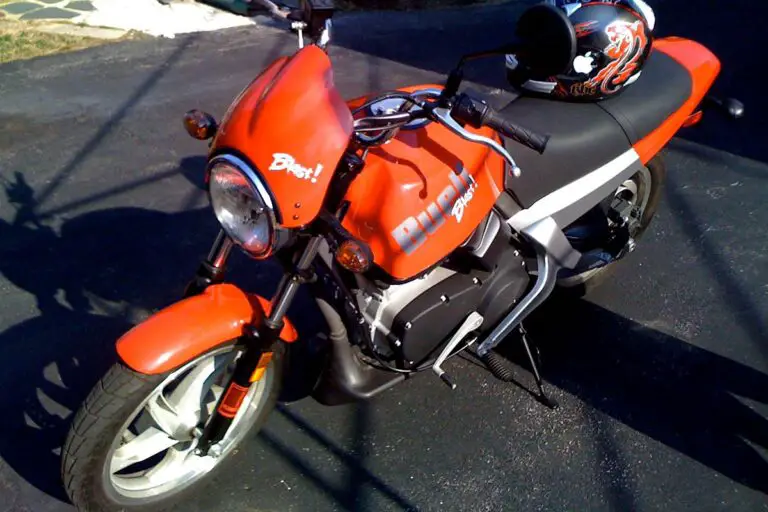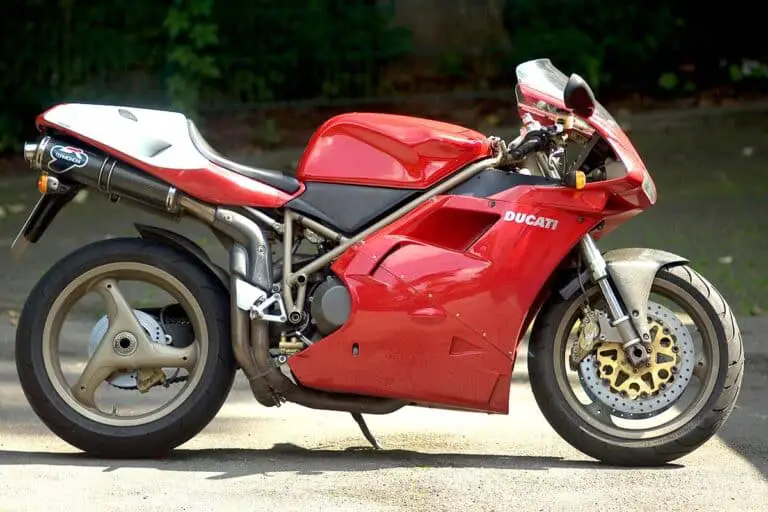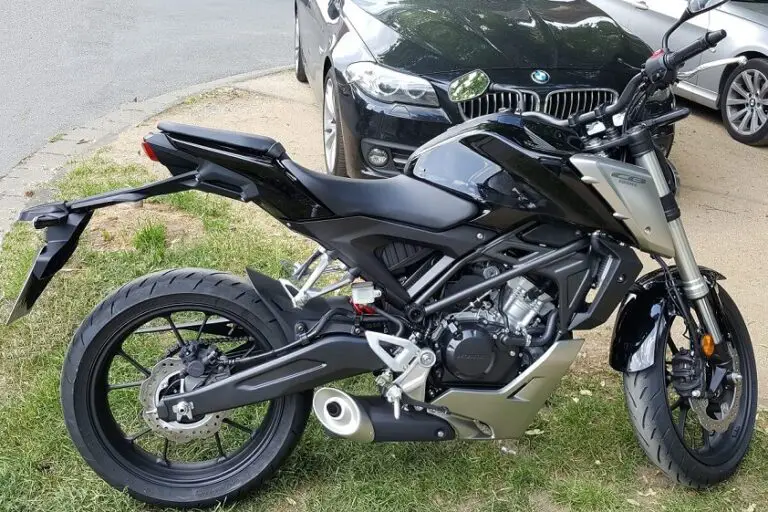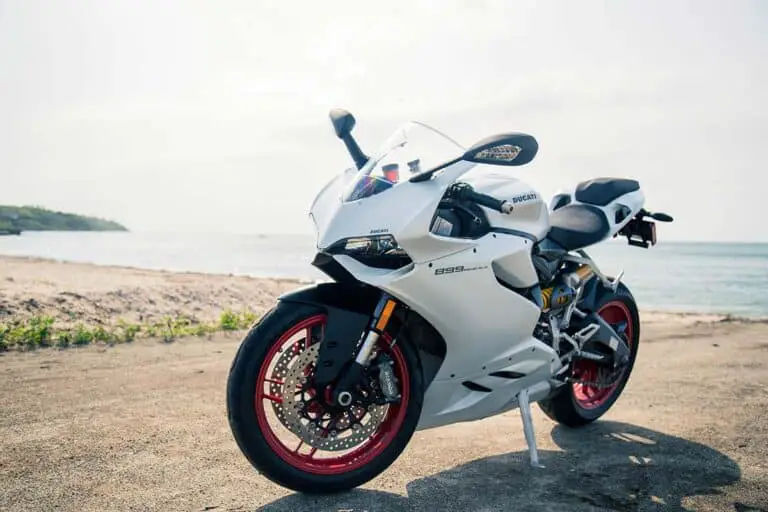Ninja 650 vs. ZX-6R: What Are the Differences? (Pros & Cons)
Disclosure: We may get commissions for purchases made through links in this post.
Team Green’s sportbike lineup offers a range of options catering to varying riding preferences and skill levels. Two popular models, the Ninja 650 and the ZX-6R, stand out due to their unique attributes and performance capabilities. In this article, we will explore their pros and cons and, more importantly, the key differences between these motorcycles.
The Ninja 650 and ZX-6R represent two distinct approaches to the sportbike genre. The former prioritizes rider comfort, versatility, and enjoyment. Meanwhile, the latter boasts uncompromising high-performance features designed to satisfy the whims of experienced riders and track enthusiasts.
Although both exemplify Kawasaki’s commitment to delivering exceptional riding experiences, understanding the key differences will help you choose the motorcycle that best aligns with your aspirations, preferences, and riding style.
So without further ado, let us delve into the disparities between these iconic Ninjas.

Kawasaki’s Ninja 650 vs. ZX-6R
The Ninja 650 and the ZX-6R have each carved their own niche in Kawasaki’s sportbike portfolio. While sharing the iconic Ninja brand, these motorcycles have distinct identities and target different markets.
The Ninja 650 debuted as a versatile middleweight sportbike designed for everyday riding. It quickly gained popularity among riders seeking a middle ground between performance and practicality. Over the years, the Ninja 650 has undergone advancements in suspension, ergonomics, and fuel injection settings, refining its features and expanding its appeal.
On the other hand, the ZX-6R has built a reputation as a formidable supersport machine since the mid-’90s, primarily intended for track-focused aficionados. With a rich racing heritage and high-performance DNA, the ZX-6R has continuously evolved to deliver exhilarating riding experiences.
Ninja 650 vs. ZX-6R Specs Comparison
Engine
Both motorcycles share the same liquid cooling system, fuel injection, and torque output but at different RPMs (66.7 Nm or 6.8 kgf-m, 49.2 lb-ft @ 7,000 RPM for the 650 and 11,800 RPM for the ZX-6R). Other than that, everything else is different.
The ZX-6R, in particular, has a smaller piston displacement than its Team Green counterpart. But it more than compensates for this in compression ratio, which gives it a considerably higher top speed rating and power output than the 650R — in addition to reduced emissions and much better thermal efficiency.
| Description | Ninja 650 (EX650C9F/D9F) | Ninja ZX-6R |
|---|---|---|
| Engine Type | 4-stroke, parallel twin-cylinder DOHC | 4-stroke, parallel inline-4 DOHC |
| Displacement | 649 cm3 (39.6 in3) | 599 cm³ (36.6 cu in3) |
| Bore-Stroke Ratio | 83 x 60 mm (3.27 x 2.36 inches) | 67 × 42.5 mm (2.64 × 1.67 inches) |
| Compression Ratio | 11.3:1 | 13.3:1 |
| Top Speed | 137.3 mph (220.9 km/h) | 162 mph (260.7 km/h) |
| Horsepower | 71 hp (53 kW, 72 PS) @ 8,500 RPM | 124.4 bhp (92.7 kW) @ 13,500 RPM |
| Torque | 66 Nm (6.7 kgf-m, 49 lb-ft) @ 7,000 RPM | 66.7 Nm (6.8 kgf-m, 49.2 lb-ft) @ 11,800 RPM |
| Fuel Mileage | 45—55 mpg (5.1—6.3 L/100 km) | 35—50 mpg (5.6—8.1 L/100 km) |
Fuel & Lubrication
While the fuel requirement for these sport-oriented motorcycles is unleaded gasoline with a PON 87 or 90 (R+M)/2 rating, the ZX-6R has a higher fuel capacity. The same applies to the ZX-6R’s lubrication requirements, despite the bike having a smaller-displacement power mill that feeds on SAE 10W-40 engine oil.
| Description | Ninja 650 (EX650C9F/D9F) | Ninja ZX-6R |
|---|---|---|
| Tank Capacity | 15.5 L (4.1 USgal) | 17 L (4.5 USgal) |
| Lubrication System | Forced lubrication (semi-dry sump) | Forced lubrication (wet sump) |
| Oil Type & Capacity | 1.7 L (1.8 US qt, at draining) 1.9 L (2.0 US qt, filter change) 2.4 L (2.5 US qt, disassembly) | 2.8 L (3.0 US qt, at draining) 3.1 L (3.3 US qt, filter change) 3.6 L (3.8 US qt, disassembly) |
Drivetrain
Performance-wise, testers and owners alike have found the Ninja 650 a more versatile and accessible two-wheeler, masterfully blending performance, comfort, and everyday usability.
Meanwhile, the same-class ZX-6R is designed as a high-performance sportbike focusing on speed and track-oriented capabilities. As such, the latter features more horsepower, higher rev limits, and more aggressive performance characteristics compared to the higher-displacement 650.
| Description | Ninja 650 (EX650C9F/D9F) | Ninja ZX-6R |
|---|---|---|
| Primary Reduction Ratio | 2.095 (88/42) — Gear | 1.900 (76/40) |
| Gear Ratio — 1st | 2.438 (39/16) | 2.714 (38/14) |
| Gear Ratio — 2nd | 1.714 (36/21) | 2.200 (33/15) |
| Gear Ratio — 3rd | 1.333 (32/24) | 1.850 (37/20) |
| Gear Ratio — 4th | 1.111 (30/27) | 1.600 (32/20) |
| Gear Ratio — 5th | 0.966 (28/29) | 1.421 (27/19) |
| Gear Ratio — 6th | 0.852 (23/27) | 1.300 (26/20) |
| Final Reduction Ratio | 3.067 (46/15T) | 2.688 (43/16T) |
| Overall Drive Ratio | 5.473 @ Top Gear | 6.638 @ Top Gear |
Ignition & Electricals
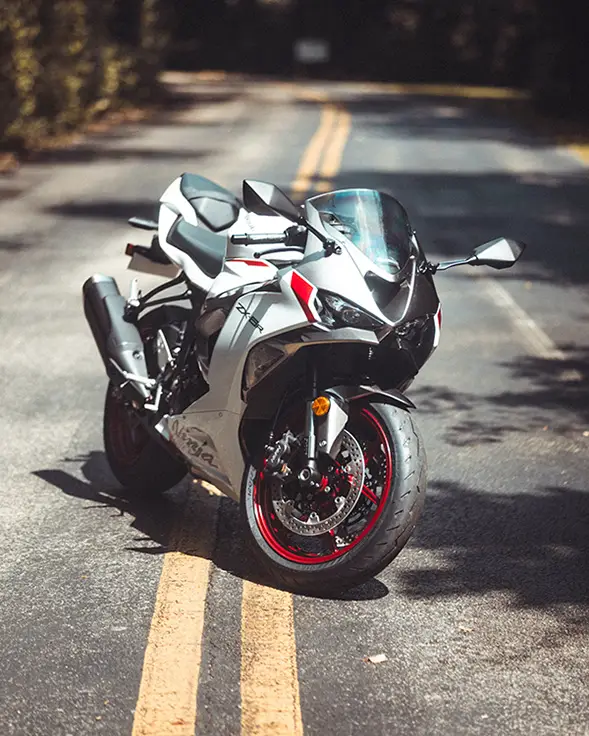
Both Kawasakis have battery & coil ignition (transistorized, TCBI w/ digital advance) and triple-phase A.C. alternators serving as their charging system. Regarding lighting assemblies, headlights, and tail/brake lights are just about the only components shared between the 650 and ZX-6R.
The Ninja ZX-6R does not come with integrated city lights or turn signal lights as part of its factory equipment. Conversely, the 650 is not equipped with a license plate light or front/rear turn signal lights.
| Description | Ninja 650 (EX650C9F/D9F) | Ninja ZX-6R |
|---|---|---|
| Ignition Timing | From 10° BTDC @ 1,300 ± 50 RPM to 34° BTDC @ 5,000 RPM | 12.5° BTDC @1,300 ± 50 RPM to 37.5° BTDC @ 9,000 RPM |
| Battery Format | 12V 10 Ah/(10 HR) FTX12-BS | 12V 8 Ah/(10 HR) YTX9-BS |
| Battery Dimensions | 150 x 87 x 130 mm | 150 x 87 x 105 mm |
| Spark Plug, Electrode Gap | NGK CR9EIA-9, 0.8 – 0.9 mm (0.031 – 0.035 inch) | NGK CR9E, 0.7 – 0.8 mm (0.028 – 0.032 inch) |
| Headlight | Semi-sealed beam, 12V 55 W + 55 W (quartz-halogen, high); 12V 55 W (quartz-halogen, low) | 12V 55 W + 65 W (high beam); 12V 55 W (low beam) |
Tires & Brakes
You will see in the table below that the majority of the tire-and-wheel components of these motorcycles are distinctly their own. The only similarities between the two are the specs of their front knobbies (120/70 ZR17 M/C, 58W), the size of their front and rear brakes — except the front calipers (view on Amazon) — and the brand of their stock tires.
| Description | Ninja 650 (EX650C9F/D9F) | Ninja ZX-6R |
|---|---|---|
| Tire Brand (F/R) | Bridgestone BATTLAX BT021F J / BT021R J | Bridgestone BATTLAX BT016F L / BT016R L |
| Rear Tire Size | 160/60 ZR17 M/C (69W), tubeless | 180/55 ZR17 M/C (73 W), tubeless |
| Cold-tire Pressure (F/R) | 225 kPa (2.25 kgf/cm², 32 psi — front) / 250 kPa (2.50 kgf/cm², 36 psi — rear) | 250 kPa (2.50 kgf/cm², 36 psi — front); / 290 kPa (2.90 kgf/cm², 42 psi — rear) |
| Rim Size (F/R) | 17 × 3.50 / 17 × 4.50 | 17 × 3.50 / 17 × 5.50 |
| Front Brakes | Dual 300-mm petal rotors w/ 27-mm dual-piston calipers | Dual 300-mm hydraulic discs w/ 37-mm 4-piston calipers |
| Rear Brakes | 220-mm petal disc w/ single-piston caliper | 220-mm petal disc w/ single-piston caliper |
Suspension
Although variances in figures are minimal, the effects of these differences are notable and exhibited in the sportbikes’ maneuverability and overall performance.
The ZX-6R’s inverted forks, for one, make for enhanced stability and handling characteristics over the 650. The rear unit’s 25-way adjustability also provides better feedback during aggressive riding maneuvers like hard braking, high-speed cornering, and quick direction changes.
| Description | Ninja 650 (EX650C9F/D9F) | Ninja ZX-6R |
|---|---|---|
| Wheelbase | 1,410 mm (55.5 inches) | 1,400 mm (55.1 inches) |
| Ground Clearance | 145 mm (5.7 inches) | 120 mm (4.7 inches) |
| Caster Angle / Trail | 25 °; 106 mm (4.2 inches) | 24 °; 103 mm (4.1 inches) |
| Front Suspension, Travel | 41-mm conventional telescopic front forks (view on Amazon), 120 mm (4.7 inches) | 41-mm USD Showa Big Piston front forks, 120 mm (4.7 inches) |
| Rear Suspension, Travel | Swingarm, 125 mm (4.92 inches) | Bottom-Link Uni-Trak with gas-charged shocks, 134 mm (5.2 inches) |
Dimensions
Differences in overall dimensions between these two sportbikes are negligible, except for the seat height, curb weight, and estimated GVWR. Riders with a smaller stature will likely favor the ZX-6R, as their inseams would be more compatible with this bike over the Ninja 650. The former is also slightly more lightweight, lending to easier handling and command of the two-wheeler.
| Description | Ninja 650 (EX650C9F/D9F) | Ninja ZX-6R |
|---|---|---|
| Dimensions (L x W x H) | 82.7 x 29.9 x 47.2 inches (2,100 x 760 x 1,200 mm) | 82.3 x 28 x 43.9 inches (2,090 x 710 x 1,115 mm) |
| Seat Height | 31.1 in ches (790 mm) | 32.3 in ches (815 mm) |
| Curb Weight | 204 Kg (450 lbs., EX650C); 208 Kg (459 lbs., EX650D) | 191 Kg (421 lbs.) |
| Payload Capacity | 181.4 Kg (400 lbs.) | 180 Kg (397 lbs.) |
| Estimated GVWR | 385 — 389 Kg (849 — 858 lbs.) | 371 Kg (817.9 lbs.) |
You can close that 13-Kg gap in curb mass between the two Ninjas by shedding weight off the Ninja 650. Especially if you intend to use the sportbike for racing applications, its heft may not be as immaterial as you would like to think.
Thankfully, all you have to do is replace or remove components that the motorcycle can do without on the track (these items are enumerated in my article on the Kawasaki Ninja 400 vs. 650). If you wish to exhaust weight savings on either bike, you may also opt for aftermarket parts constructed from aluminum, fiberglass, titanium, or any other light material.
Exterior
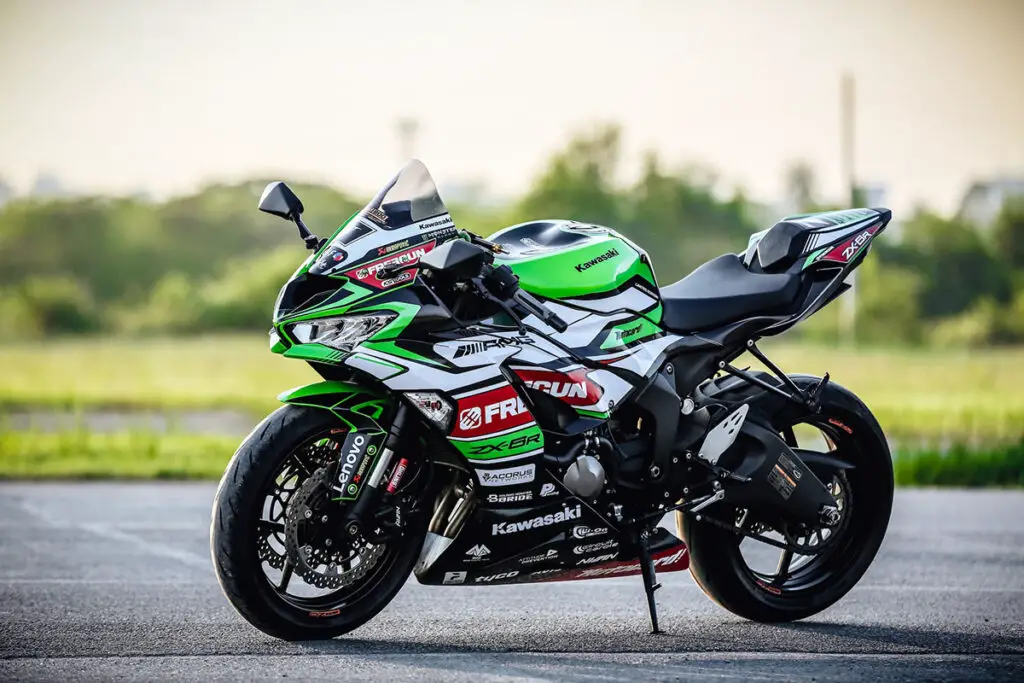
Superficially, there is not much difference between these two Ninjas — despite the 650 being the tamer, road-going sportbike and the ZX-6R being the “purpose-built racebike.” However, subtle variances in styling and accents speak volumes of each bike’s inherent mannerisms.
The ZX-6R includes perks like a quick-turn throttle, gear sets with alternative ratios, a programmable ECU, a more aggressive intake cam, and head gaskets available in varying thicknesses. Its color schemes are simple yet edgy, including Lime Green, Metallic Diablo Black/Flat Super Black, and Candy Surf Blue/Flat Super Black.
Kawasaki Ninja 650 vs. ZX-6R Pricing
Per JD Power data, the 1995 Kawasaki ZX-6R (ZX600F1) had an MSRP of $7,899 (around $15,800 if sold brand-new today). There were incremental rate increases in subsequent years after its debut.
Finally, the sportbike’s list price hit five digits in 2010 when its base model sold for $10,499. The most expensive trim of the ZX-6R was the 2015 Ninja ZX-6R (30th Anniversary Edition), with a price tag of $11,999.
The Ninja 650 entered the motorcycling scene 12 years after the ZX-6R’s inception and sold for $6,299 (roughly $9,500 with inflation factored in). Like its cousin, the bike had gradual MSRP increases throughout the years. Its 2022 incarnation, the Kawasaki EX650MNFAN (ABS, KRT), sold for $8,299 — 30% cheaper than the same-year ZX-6R KRT Edition.
Pros and Cons — ZX-6R vs. Ninja 650
Kawasaki Ninja 650
Pros
- The 650 offers peppy performance without being intimidating, promotes responsible riding, delivers good fuel economy, and provides reasonable comfort. Moreover, the insurance premium for this bike is comparatively affordable.
- Improved low-end torque and responsive low-to-mid-range RPM performance are achieved through fuel injection adjustments.
- Enhanced cruising capability at 75 mph with a modified shift lever position makes power delivery smoother.
- Upgraded design elements include a redesigned trellis-style framework, improved engine and handlebar mounts, rubber-coated footpegs, assist & slipper clutch, and revised suspension settings for reduced vibration and improved handling.
- The Ninja 650 provides a comfortable ride, smoother power delivery, and increased low-end torque, enhancing handling and minimizing unexpected power surges.
- Dual-purpose turn signals also serve as hazard lights for added convenience.
- Storage options include four tie-down hooks and under-seat storage suitable for small valuables.
- The Ninja 650 is priced approximately $4,000 lower than the ZX-6R, making it a more affordable option for budget-conscious gearheads.
Cons
- The Ninja 650’s parallel-twin engine has a lower redline and power output than the higher-revving inline-four engine of the ZX-6R.
- Exterior-wise, it does not have body graphics and is typically available only in solid color schemes.
- Its color TFT display is also not as advanced or visually impressive as those found on KTM or Ducati counterparts.
Kawasaki Ninja ZX-6R
Pros
- The ZX-6R has larger rear tires (180/55) than the Ninja 650 (160/60), contributing to improved stability.
- It also has a considerably shorter overall length and smaller turning radius than the Ninja 650, enhancing maneuverability in crowded urban areas.
- The presence of a traction control system and different power modes allow for better control and adjustability of traction depending on road conditions (not to mention the ability to select appropriate performance settings for various terrains)
- An adjustable windshield allows riders to customize it for optimal wind protection and improved aerodynamics.
- To add, a quick shifter helps facilitate smoother and safer gear shifting during high-performance, spirited riding on racetracks.
Cons
- The ZX-6R’s inverted forks may provide a different feel and handling compared to the Ninja 650’s cartridge forks.
- Its bottom-link Uni-Trak suspension is stiffer, which may somewhat compromise rider comfort.
- Although considered by some riders as a good beginner bike, the ZX6R’s higher power output and more aggressive nature require greater caution and a higher skill level from gearheads.
- Distribution in European markets ceased after 2017 due to the bike’s emissions not meeting Euro4 standards.
Shared Benefits & Drawbacks
Benefits
- Both motorcycles exhibit similar braking distance and performance.
- Later-year models of these sportbikes feature enhanced DFI (fuel injection) settings, leading to improved combustion efficiency and fuel economy. This update also ensures compliance with Euro3 emissions regulations, reflecting Kawasaki’s commitment to environmental standards.
- Despite their piston displacement, many discover that both Ninja models are approachable and far from intimidating, making them excellent value for money. These well-balanced motorcycles cater to riders of all levels, from beginners to more seasoned riders.
Drawbacks
- Safety and stability during pillion riding may be adversely affected due to the absence of grab rails (view on Amazon).
Conclusion — Kawasaki Ninja 650 vs. ZX-6R
You might already know which bike to choose between the Kawasaki Ninja 650 and ZX6R, but here are a few reminders.
The Ninja 650 prioritizes low-end power, making it suitable for daily commutes and city environments. Meanwhile, the ZX-6R’s higher horsepower becomes prominent in the upper rev range, providing riders with an exhilarating experience and contributing to faster quarter-mile times.
During city rides, for instance, these performance variances are almost negligible. However, they become apparent when both motorcycles are tested in high-speed riding and racing applications.
At this point, their individual competencies shine — the Ninja 650 offering a favorable balance of power and practicality, and the Ninja ZX6R emphasizing top-tier power and performance.
All that is left for you to do is choose the sport bike that aligns with your needs. Either way, you will end up owning a Ninja.

